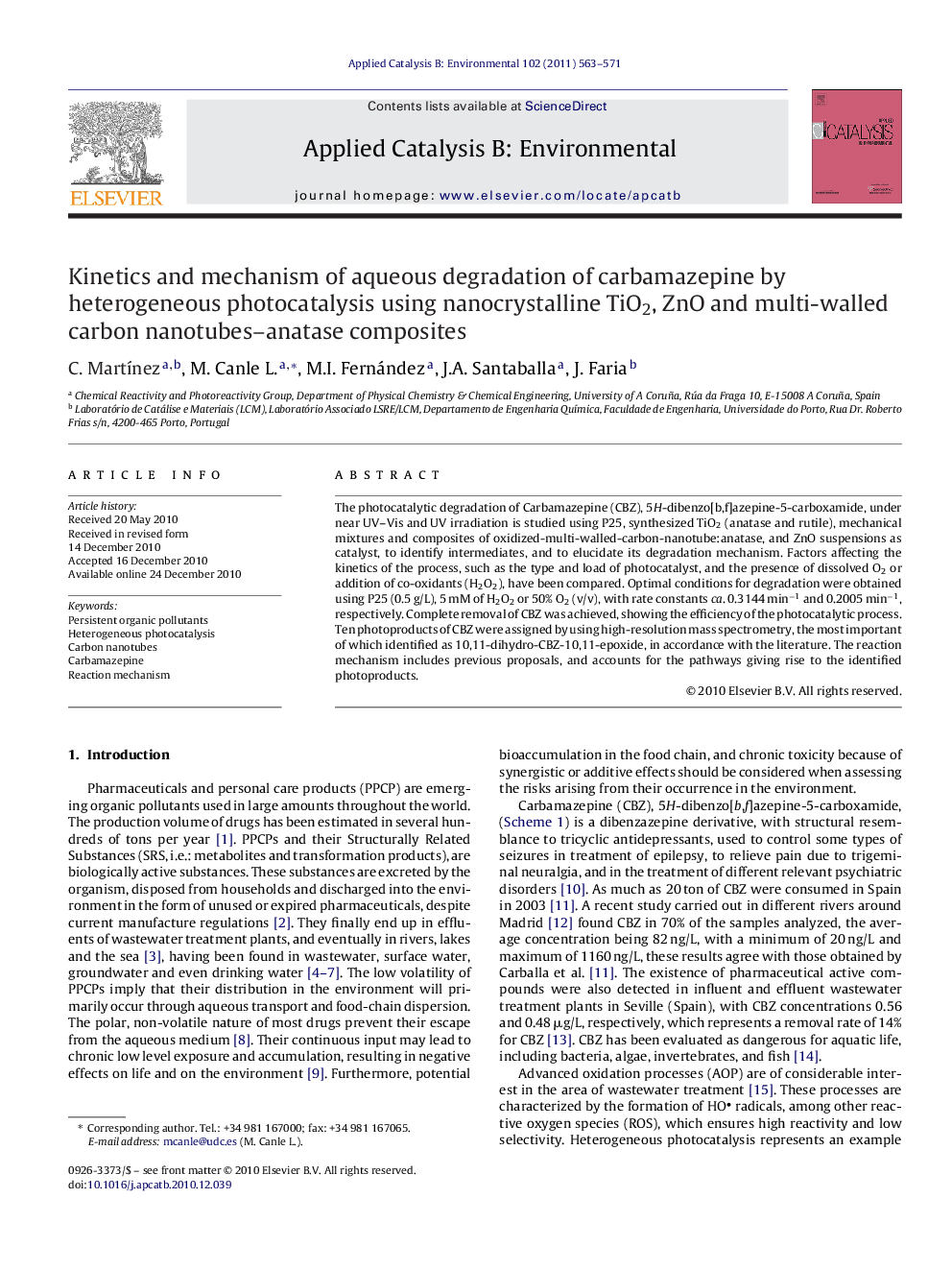| Article ID | Journal | Published Year | Pages | File Type |
|---|---|---|---|---|
| 47123 | Applied Catalysis B: Environmental | 2011 | 9 Pages |
The photocatalytic degradation of Carbamazepine (CBZ), 5H-dibenzo[b,f]azepine-5-carboxamide, under near UV–Vis and UV irradiation is studied using P25, synthesized TiO2 (anatase and rutile), mechanical mixtures and composites of oxidized-multi-walled-carbon-nanotube:anatase, and ZnO suspensions as catalyst, to identify intermediates, and to elucidate its degradation mechanism. Factors affecting the kinetics of the process, such as the type and load of photocatalyst, and the presence of dissolved O2 or addition of co-oxidants (H2O2), have been compared. Optimal conditions for degradation were obtained using P25 (0.5 g/L), 5 mM of H2O2 or 50% O2 (v/v), with rate constants ca. 0.3144 min−1 and 0.2005 min−1, respectively. Complete removal of CBZ was achieved, showing the efficiency of the photocatalytic process. Ten photoproducts of CBZ were assigned by using high-resolution mass spectrometry, the most important of which identified as 10,11-dihydro-CBZ-10,11-epoxide, in accordance with the literature. The reaction mechanism includes previous proposals, and accounts for the pathways giving rise to the identified photoproducts.
Graphical abstract.Figure optionsDownload full-size imageDownload as PowerPoint slideResearch highlights▶ A detailed mechanism is proposed for the photocatalytic degradation of carbamazepine. ▶ The efficacy of composites MWCNT-TiO2 is discussed and compared with TiO2. ▶ The mechanism of action of MWCNT-TiO2 composites is analyzed. ▶ The effects of the variables affecting the process are discussed.
